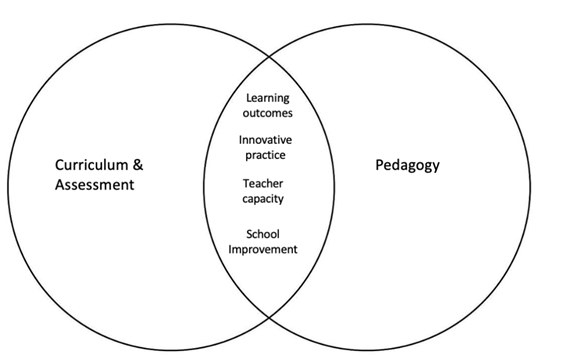
This year at Xavier College in Kew, staff are embracing an exciting new approach to educational leadership.
This year, the College has introduced an innovative new system where the role of Head of Learning Areas (HOLAs) for each subject is shared between two staff members – with one focusing on Pedagogy while the other takes on Curriculum and Assessment.
According to Monique Dalli, the College’s Director of Learning & Growth, this dual-leadership model has had positive impact on the running of each department as well as student academic experience.
When asked about the challenges that prompted the decision to split the Head of Learning role, Dalli said there was opportunity in rethinking and reimaging middle leader learning-area leadership roles as the College shifted to become a 7-12 school.
“Challenges in middle leadership in education are common across schools due to the single point of contact for large groups of staff,” Dalli told The Educator.
“Decision fatigue, feeling stretched in time across numerous and vast demands, the balancing of the facets of learning areas leadership role against the daily needs of school and strategic drive for school improvement.”
Dalli said Xavier College’s school leadership is in ‘a co-leadership’ model – Principal and Rector – which she said endures its success.
“Making this model work was about seeking further research and practice on co-leadership to be able to transfer this into our school setting,” she said.
“Business sectors and IT utilise co-leadership to leverage the strengths of leaders, to maximise capacity of interdisciplinary teams and to create collaboration. We have maximised change in our school as an opportunity to enhance and adapt the learning area leadership model to suit our strategic vision.”
Dalli said the model has had a markedly positive impact on the running of each department at the College since its implementation.
“Staff now have clear lines of communication regarding the various elements of their work,” she said.
“The roles and responsibilities have clear delineation for areas like Professional Learning, excursions, assessment planning, classroom support, and equally there are elements of the role that rely on shared vision and co-leadership.”
Dalli said each role equally has “collective purpose and individual focus”.
“Each leader has role a clear role, projects and strategic areas,” she said. “Co-leadership intentionally creates teams and partnerships between leaders of the same roles across learning areas - Pedagogy leaders and Curriculum and Assessment teams.”
Overall, says Dalli, the leadership model is supporting the strategic plans at the school.
“We are in progress of curriculum renewal and implementing coaching, and these roles will lead the work, that will lead to improved learning outcomes for students.”

Dalli said students are experiencing the benefits of a co-leadership model through what the specialised roles achieve.
“Curriculum and Assessment Heads of Learning are leading what we teach, while Pedagogical Heads of Learning are focused on how,” she said.
As for what other schools could learn from Xavier College’s model, Dalli said middle leaders play a vital role in school improvement and, as the school’s initiative shows, create a more cohesive and productive teaching and learning environment.
“The distribution of strategic responsibility for some schools can be tiered and structured in a top-down model, or structured in siloed roles,” Dalli said.
“What co-leadership offers is shared responsibility, shared vision, shared decisions – this can create a sustainable system for middle school leaders to thrive and teams to achieve vision and school goals – equal leadership, cooperation, and collaboration.”


